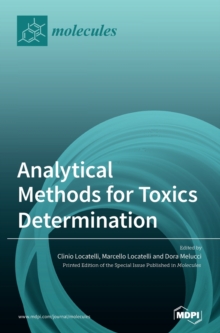The purpose of this volume is to show how in this area the technology, creativity and inventiveness are the basis of new and encouraging results not only in the environmental field but also in the monitoring of xenobiotics of organic and inorganic origin in complex matrices. The final objective will always be on determining the fundamental parameters of interest to set up an analytical procedure, such as precision and trueness (that together give accuracy), the limits of detection and quantification, selectivity, and especially sensitivity, or attempting to increase this. The succession of the articles reported in this volume intend to follow a path starting from the development of new systems for the pretreatment of the sample (to be applied at an environmental level) for the monitoring of pollutants but also evaluating whether a plant species can be considered as a bioindicator of exposure and bioaccumulation. The succession continues by considering articles where the development of new devices, materials, and procedures to be applied for the determination of complex matrix toxicants (both environmental and food and biological) is reported. In particular, Hamad Al-Shaalan and collaborators report the development of composite nanoparticles used in solid phase micromembrane tip extraction and capillary electrophoresis to determine phenol and p-aminophenol in wastewater. The two articles of Salinitro and collaborators, as well as Bora and coworkers, report on the use of natural species as bioindicators of exposure to xenobiotics present at the environmental level. In particular, Salinitro reports the ruderal species Senecio vulgaris L., Polygonum aviculare L., and Poa annua L. as possible candidates for biomonitoring Cu, Zn, Cd, Cr, Ni, and Pb in multiple environments. Bora and collaborators instead evaluate the environmental quality of polluted areas near the Baia Mare Mining and Smelting Complex for future improvements of the environment quality in polluted areas, such as the city of Baia Mare and its surroundings. We then proceed with Wang and collaborators who propose a LIBS (laser-induced breakdown spectroscopy) procedure for the quantitative determination of pollution compositions on insulators and examination of the spectral characteristics of a natural pollution sample. Recently, also, ELISA techniques have seen wide development and application in various fields (environmental, food, as well as biological). Precisely on this, Han and collaborators report on the development of a self-assembled direct competitive enzyme-linked immunosorbent assay (dcELISA) kit for the detection of deoxynivalenol (DON) in food and feed grains. Lin and colleagues on the development of a new procedure for rapid and effective extraction of solasodine (strong pharmacological characteristics) from Solanum nigrum L. by microwave-assisted aqueous two-phase extraction (MAATPE). Garcia Ferreira and collaborators instead develop a procedure for the simultaneous quantification of clotrimazole and itraconazole and the study of their stability in a new microemulsion for the treatment of sporotrichosis. Zhang and colleagues study, by differential pulse voltammetry, the electrochemical behavior of hydrochlorothiazide and pyridoxine on ethylenediamine-modified glassy carbon electrode. Tartaglia and collaborators report the characterization of a new stationary phase, molecularly imprinted polymer-based (MIP-based), that can be used in the solid phase extraction (SPE) from biological matrices in order to assess the level of exposure to this class of compounds widely used as preservatives in various fields, especially in cosmetics.

